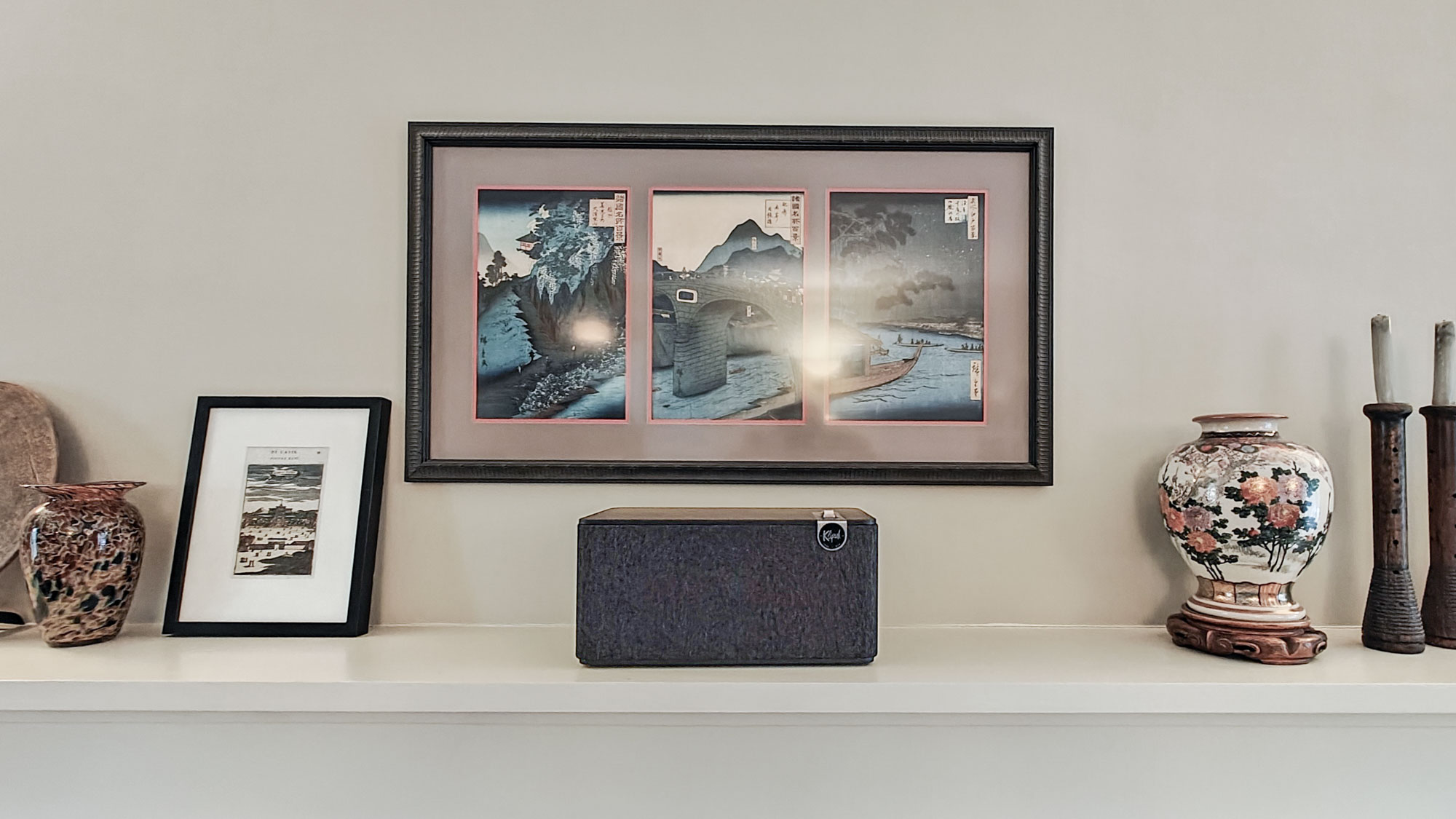
For years, I’ve wanted to fill my home with music, but Sonos and other whole-house wireless speaker systems were too expensive and tricky to set up for me to use. Enter Klipsch, a maker of high-end speakers, with The Three Plus smart speaker that can not only fill a room with tunes but connect with other Klipsch products to create a more symphonic home.
While there are hundreds — if not thousands — of wireless speakers available, The Three Plus (TTP) stands out with a design worthy of the company’s reputation for high-quality audio and striking, yet functional, design. At 13.6 x 8.0 x 6.3 inches, it is slightly smaller than the Sonos Era 5 wireless speaker. Its 10-pound weight is a little easier to move around compared to the Era 5’s 14-pound heft as well. But is this one of the best smart speakers?
Klipsch Three Plus Review: Price and Availability

At $399, the TTP may not be cheap compared to non-name wireless speakers but it is often available for about $320. That’s a big discount compared to the Sonos 5’s $550 price tag. If that’s too pricey, Klipsch’s smaller and less powerful The One Plus model costs $249.
Klipsch Three Plus Review: Design and Build
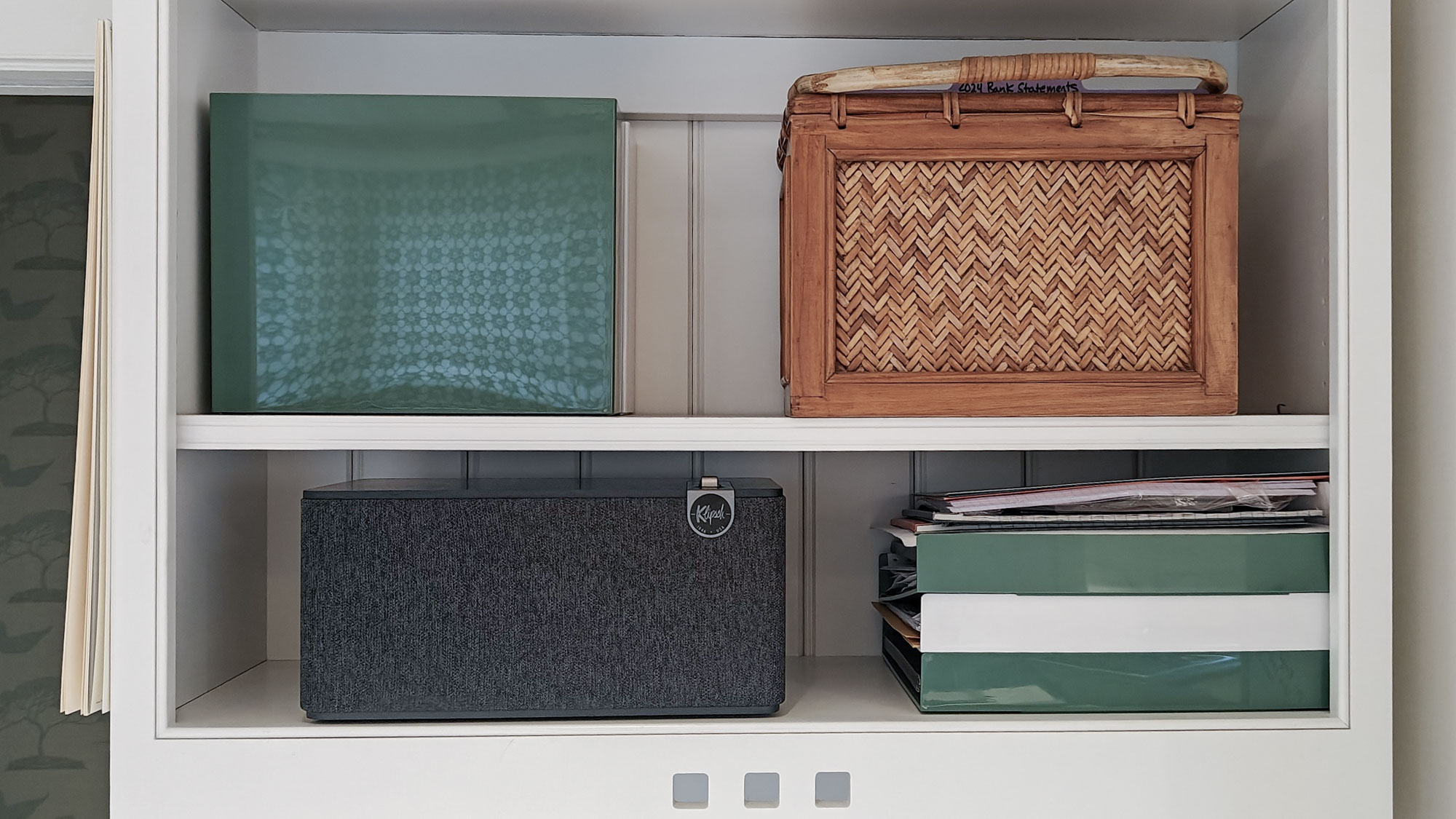
I looked at a pair of the Ebony version TTPs that accurately recreates the matte black look and feel of the plywood enclosure of the vintage KG3 floor speakers I owned in the 1990s. There’s also a woodgrain Walnut veneered version with more of a Swedish modern aesthetic to it. Either can fit on a bookcase, sit on a kitchen counter or out in the open on a coffee table. In fact, the TTP blends in with the background so well that it’s easy to hide, but that would be a shame.
Behind the wrap-around fabric grille, The Three Plus hides stereo 2.25-inch full-range drivers along with a 5.25-inch woofer for low-end response but lacks the separate high-frequency tweeters of the Sonos 5. Instead, there’s a 5.25 passive radiator at each end of the TTP that adds to the audio stream’s volume, fullness and richness. Overall, it has a frequency response of between 45 and 20,000 Hertz that misses out on some low-end tones that are felt as much as heard but it outdoes the Sonos 5’s 55 to 17,500 Hertz range at both ends.
Klipsch Three Plus Review: Connectivity
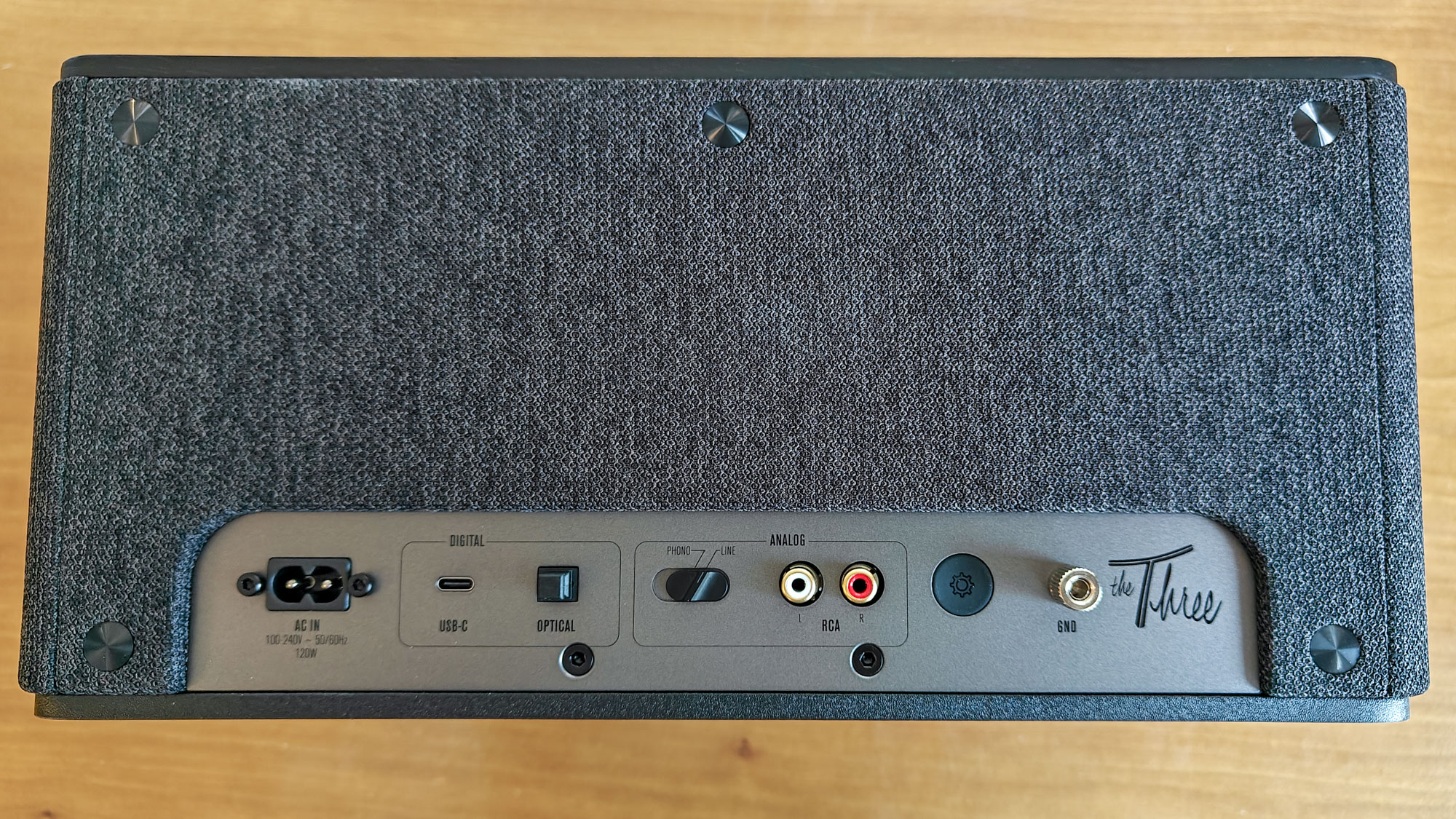
The center of attention is the TTP’s Bluetooth 5.3 radio that can remember up to eight different devices but lacks Qualcomm’s popular aptX codec for high-resolution audio enhancement. In my old house, the speaker had an 80-foot range with my Pixel 7 phone with the signal traversing two walls; an open floorplan might yield longer effective distances.
Existing on the borderline between digital and analog audio, the TTP has RCA inputs for old-school connections alongside a 24-bit Toslink optical input. The USB-C connector can supply the phone’s audio and charge it, although not at the same time. The port works with .AAC, .MP3 and .WAV files on a USB flash drive. By choice and design, the only thing it lacks is a headphone jack.
Klipsch Three Plus Review: Controls
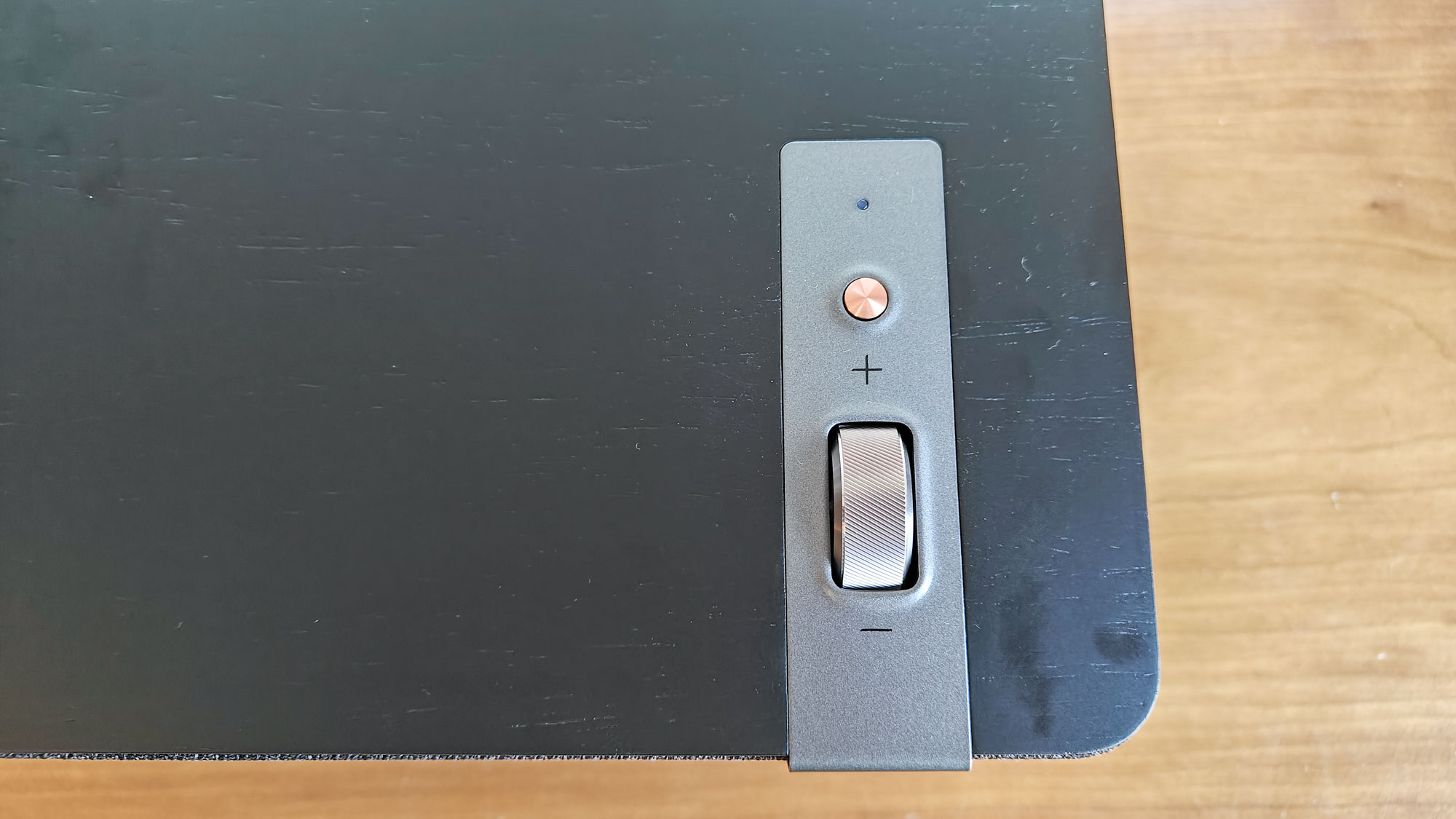
The speaker's controls are simple and straightforward with a dominant gold-tone Multifunction button that turns it on and selects the TTP’s mode. The large thumbwheel is for volume. There’s also a flush black Utility button in back for broadcasting its audio to another Klipsch speaker or resetting the TTP.
The TTP’s LED shows what’s online, with blue obviously standing for Bluetooth. It changes to red for an optical Toslink or purple for analog RCA inputs as well as white for a USB-C phone or tablet and yellow with a connected USB drive.
Klipsch Three Plus Review: Features

For good or bad, the TTP lacks its own streaming interface, relying instead on a phone, tablet or computer for its online audio via Bluetooth. After pressing the TTP’s gold button to put it into pairing mode, my Pixel 7 phone immediately found it and made the connection. Spotify music was flowing in less than a minute, a welcome relief compared to Sonos's connection issues.
Vinyl mavens take note: The TTP has the luxury of a phono preamp to boost the signal for the speaker’s 120 watt amplifier and a grounding peg for eliminating ground loop interference. In that spirit, I connected a Pro-Ject Debut Evo 2 turntable and played an original pressing of the Beatles’ Abbey Road with every note, pop and scratch coming through loud and clear.
Next up, I used Klipsch’s Broadcast Mode to link it to another TTP unit by pressing the Utility button twice on both units. A moment later the music started playing from both. It had a wireless range of 50 feet as well as up or down a floor. Able to accommodate up to 10 speakers, it also works with Klipsch’s Austin ($99), Nashville ($149), Detroit ($299) and The One Plus ($249).
There are several compromises, including the need to occasionally reconnect between the main unit and the remote one. Plus, TTP’s wireless broadcast abilities only work in Bluetooth sources, not RCA, Toslink and USB sources.
Klipsch Three Plus Review: App
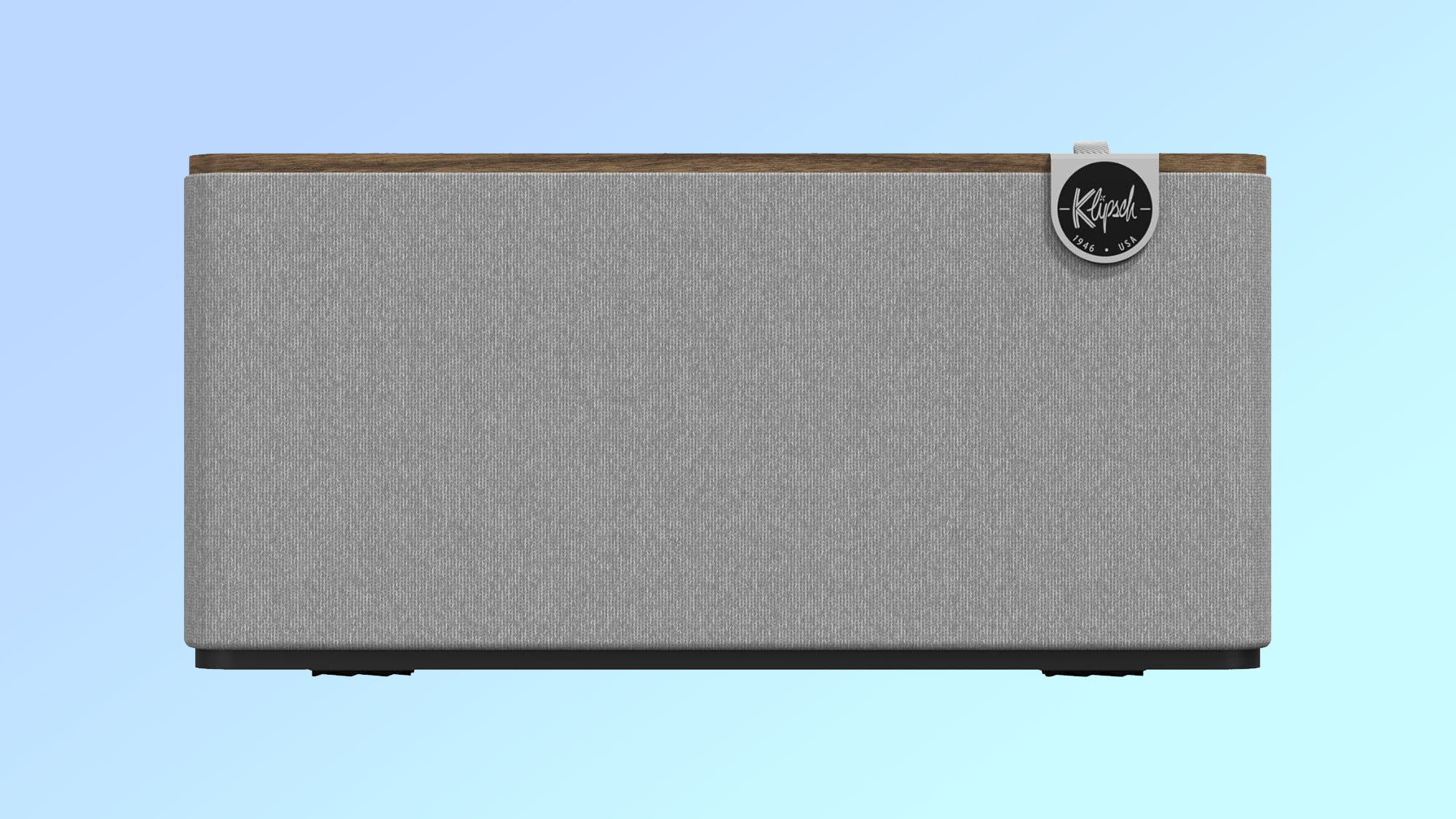
While Klipsch doesn’t include a remote control, the Connect Plus app might be better; there are Android and iOS versions. I named the speaker and in less than five minutes I was done with the entire setup.
The interface’s earthy feel is from its predominant use of brown; night owls take note, there’s no dark mode. In addition to turning the TTP on or off, the app has a play/pause key and can skip to the beginning or end of the current track. The innovative Night mode limits bass response to allow the rest of the family to sleep soundly.
Its rudimentary graphic equalizer has adjustments for treble, mid-range or bass tones, six presets and a custom setting. On the other hand, if you’re using two or more speakers, as I am, they can be individually named, tuned and controlled via the app.
Klipsch Three Plus Review: Sound Quality
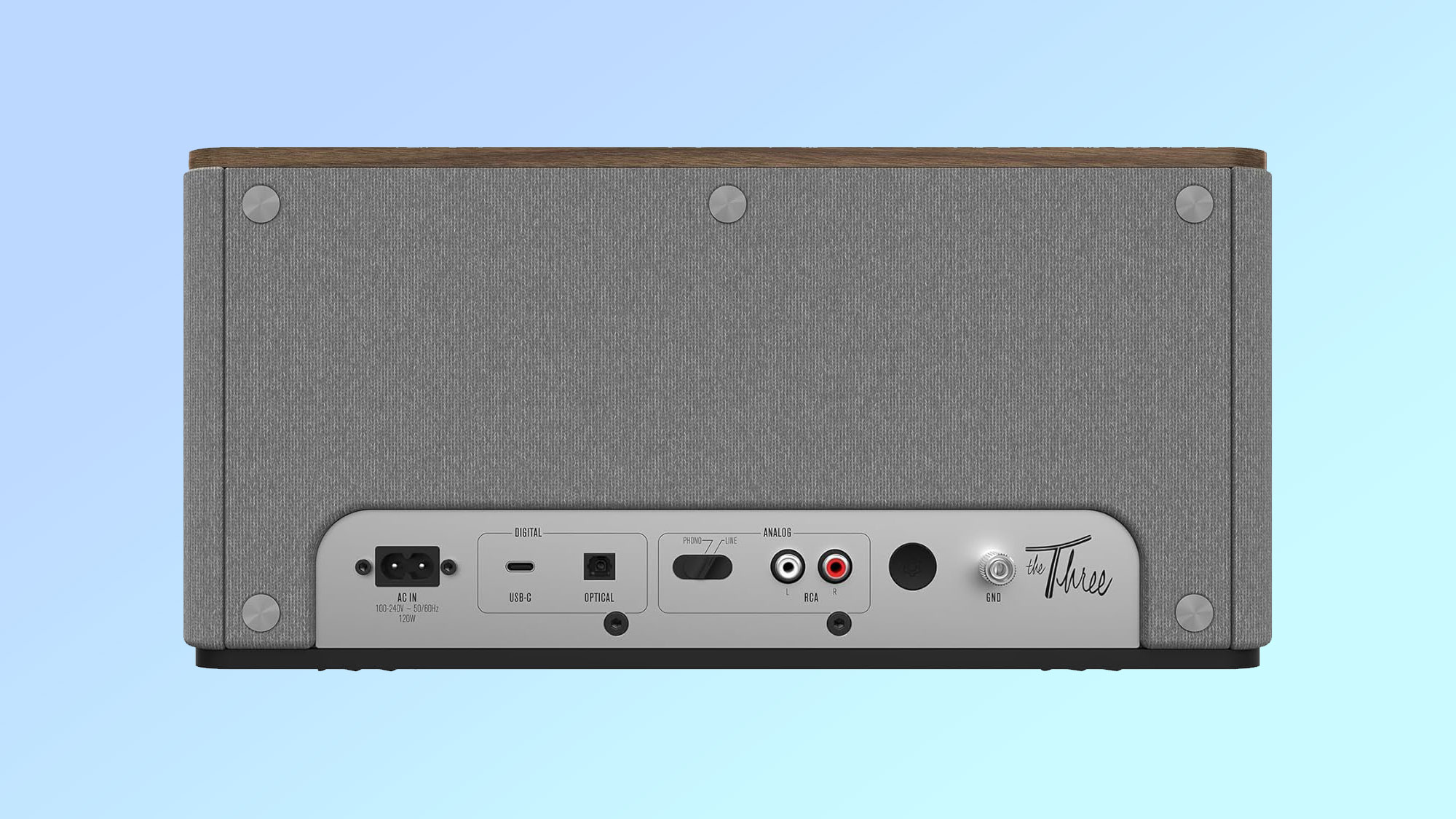
The TTP emphasizes the full-range driver’s bass notes with immediacy and vibrancy. Starting with a 256GB Kingston flash drive containing hundreds of songs, I played tracks ranging from Yo-Yo Ma to Jez Lowe and the Bad Pennies. The app, however, didn’t let me directly select a track.
Next, I fired up the Grateful Dead’s “Franklin’s Tower” over Spotify. At first the Flat equalizer setting yielded exactly what was promised, neutral audio. I goosed the midrange up 2dB, liberating the track’s sonic warmth with a well-mixed combination of guitars, drums and vocals, making the tune come alive for me.
I switched to my Toslink-connected LG CD/DVD player for Lyle Lovette’s “Cowboy Man” followed by Trombone Shorty’s “Hurricane Season”. Both had the energy, vibrancy and immediacy that so many wireless speakers lack and sounded just as good as through my Presonus Eris speakers and subwoofer. Every bit of Lyle’s raspy voice and Troy’s (aka, Trombone Shorty) brass solos were front and center.
I set up the two TTPs in my 250 square foot office and enjoyed Klipsch’s stereo pairing. With the Pro-Ject Debut Evo 2/Abbey Road combo, I pushed the speakers to their auditory limit with “Polythene Pam”. At first, the bass overwhelmed the experience, but after some app adjustments, it was transformed into such a balanced performance that at full blast all I could do was to start singing along.
Klipsch Three Plus Review: Verdict
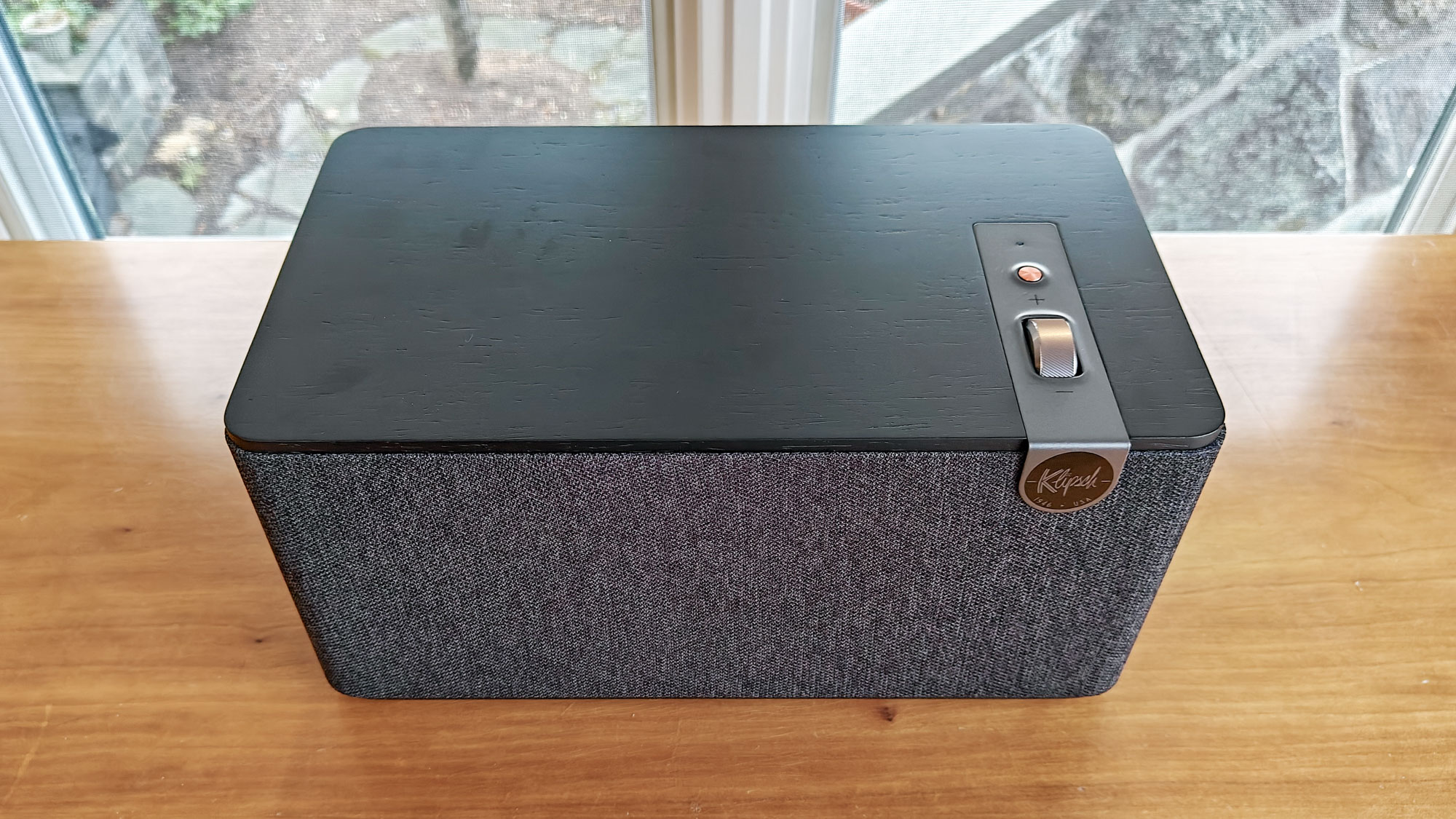
While not perfect, The Three Plus from Klipsch comes pretty close for me with an ease of use and excellent audio that’s hard to match and the ability to send it to different rooms. In addition to broadcasting all of its sources, I’d lobby for adding a Qi charging plate on top. That way I could charge my phone as it plays music through the speakers without a cable in sight.
The TTP has the right combination of price, warm rich audio and wireless connections to fill my home with music. That sounds good to me.







